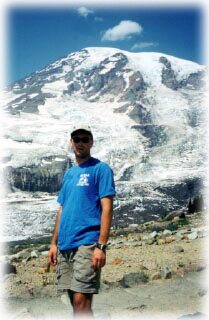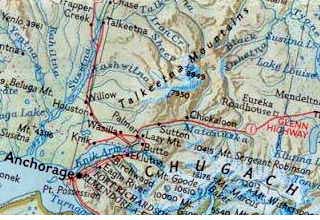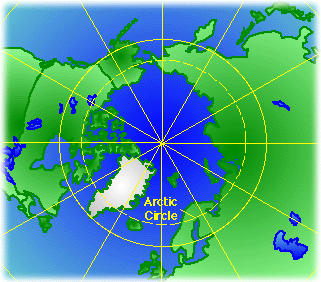





I have been a high school science teacher in Sedro-Woolley, Washington for the past 9 years. There are approximately 1100 students in the high school where I have taught freshman physical science, sophomore biology, and an upper-level botany class.
From an early age, I knew that I would someday become a teacher. My high school chemistry and physics teacher was the greatest single motivator for my career choice. Every day there was something exciting going on in his class. I chose to become a teacher so that I could help to show students what a wonderfully exciting world we live in.
I graduated from Central Washington University with undergraduate degrees in biology, geography, and earth science. After teaching for three years, I took a two year educational leave in order to pursue a graduate degree in Horticulture through Washington State University. The research experiences that I was afforded while working on this degree have translated very nicely in to the classroom.
I applied to the TEA program for two main reasons. I have always been fascinated by very harsh environments. The opportunity to travel to an area like this will allow me to better emphasize to my students the actual conditions that exist there. Along with this, being able to parcticipate in research will allow me to model to my students that there are no boundaries to learning.
Students have a natural curiosity of the world in which they live. As a science instructor I am afforded the opportunity to help reveal many of the wonders of the world in which we live to my students. I continually attempt to emphasize to my students that science is open-ended. Answers to questions more times than not simply lead to more questions. Research experiences help to foster excitement for students and also allows the instructor to speak with authority in these areas.

In July of 2002, I will be working with Dr. Greg Baker (University at Buffalo) on the Matanuska Glacier. The glacier is located in the Matanuska valley northeast of Palmer, Alaska. The valley is nestled between the Talkeetna Mountain range to the north and the Chugach range to the south.

We will be working on several projects while at the site. All of these will involve using seismic reflection and/or ground penetrating radar (gpr). Using these methods, we hope to "see" what material is being transported within the glacier and accurately map the ground surface beneath the ice.
What is seismic reflection?
Seismic waves are created by using some external force to cause a vibration in the ground (shooting a shotgun blank into the ground, striking a hammer against the ground surface, etc.). Some of the seismic waves travel directly to the geophones (very sensitive instruments used to detect the waves); other waves travel through the ground media and are reflected back up to the geophones. The time delay of the reflected seismic waves can be measured and used to create a "picture" of the geological materials of the area.
What is ground-penetrating radar?
Ground-penetrating radar utilizes electromagnetic waves, and relies on the electrical properties of the subsurface. An electrical signal is directed into the ground by a transmitter. When the signal reaches an object or layer with different electrical properties, part of the signal is reflected back to the surface where it is captured by a receiver. An inference of depth and location of an object or layer can be made by measuring the time delay between transmission and reception of the signal.
Research Objectives
Although several research projects will be worked on, I will focus on one where we will attempt to measure vertical velocity distribution through a column of the glacier using gpr.
It has long been known that the velocity of a glacier decreases from a high at the surface to a low at the interface of the glacier and the ground surface. Past methods for measuring this velocity typically involved measuring the distortion of an initially vertical borehole through the glacier. Mathematical models have been developed that accurately explain this differential flow.
In this study, we will lower metal masses, placed at intervals, into a vertical borehole. Gpr will then be employed to visualize the differential movement of these masses over time. Hopefully this will reveal a picture of how the ice at different levels within the glacier flows as well as determine how well this data fits the mathematical models for vertical velocity distribution within a glacier.

 Be sure to check out the images in the journal entries!
Be sure to check out the images in the journal entries!
August 2002
| Su |
Mo |
Tu |
We |
Th |
Fr |
Sa |
| -- |
-- |
-- |
-- |
1 |
2 |
3 |
| 4 |
5 |
6 |
7 |
8 |
9 |
10 |
| 11 |
12 |
13 |
14 |
15 |
16 |
17 |
| 18 |
19 |
20 |
21 |
22 |
23 |
24 |
| 25 |
26 |
27 |
28 |
29 |
30 |
31 |
July 2002
August 2001
| Su |
Mo |
Tu |
We |
Th |
Fr |
Sa |
| -- |
-- |
-- |
1 |
2 |
3 |
4 |
| 5 |
6 |
7 |
8 |
9 |
10 |
11 |
| 12 |
13 |
14 |
15 |
16 |
17 |
18 |
| 19 |
20 |
21 |
22 |
23 |
24 |
25 |
| 26 |
27 |
28 |
29 |
30 |
31 |
-- |
Return to top of page
|





 Be sure to check out the images in the journal entries!
Be sure to check out the images in the journal entries!


